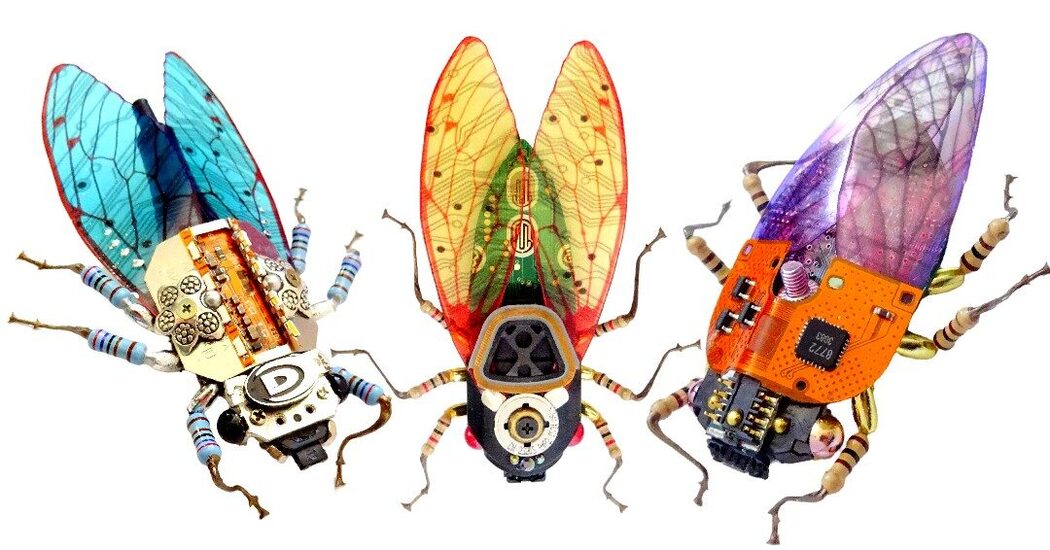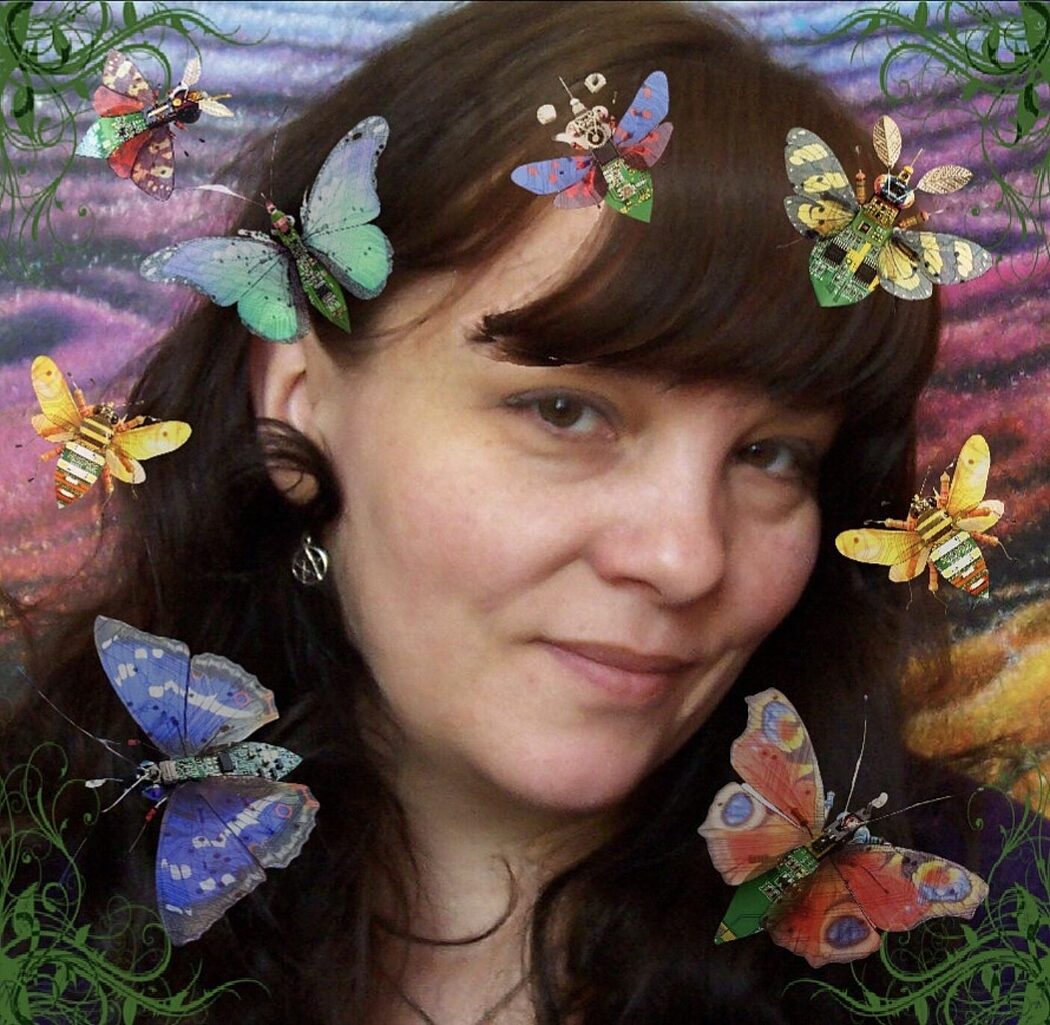Interview Julie Alice Chappell

Where are you from and where do you call home?
I’m from England, UK and I live in Hampshire on the south coast of England.
When and how did your creative path start?
I have considered myself to have been an artist practically all my life. From a very young age, around five or six years old, that is all I wanted to be.
How do you describe yourself as an artist/maker? What is your style of art/craft?
I would describe myself as an Eco-Artist. I am a sculptor, painter and photographer. I am a multi-disciplinary artist. I like to experiment with new artforms all the time and I like to mix and match styles and mediums. My preferred materials are upcycled and recycled materials such as e-waste and plastic, which are both incorporated into my artworks.
Why did you pursue this medium as opposed to another?
I primarily use recycled circuit boards and their components because when I attended college to pursue a fine art degree, we were told that everything had already been done in art. A challenge for me was to find a material that isn’t traditionally used in art. So, these state-of-the-art circuit boards, that become obsolete very quickly, were the answer to my challenge. Plus, it diverts them from ending up in landfill.
What inspires your art and design in general?
Nature is my number one inspiration. I’m a true lover of the natural world.
What is the intention behind your upcycled insect art pieces?
It is my hope that my Upcycled Insect Artworks will inspire people to appreciate the beauty of the natural world and start to realise how we must protect delicate ecosystems. I wish to raise awareness of e-waste and plastic pollution in our natural environments.
I wonder how pollution in our natural environments might adversely change the animals and the eco-systems that they have evolved in, over millions of years.
What are the main themes you explore in your work? Why?
Insects, sea creatures, and all the tiny life forms that have evolved over such a long time and that have held together the equilibrium of our eco-systems for millions of years are my main focus, and the dangers that their environments face due to human activity.
How does the use of recycled/upcycled materials contribute to your desired intention?
Circuit boards are surprisingly attractive with all their minute and complex detail and their array of metallic colours. I am actually a fan of technology and how it constantly changes and has changed the world. The beauty of circuit boards, hidden inside devices and never intended to be seen, can be viewed as artwork.
Can you describe your creative process from start to finish? Do the insects get chosen before you start, or do the works evolve as you create them?
Other artistic touches come in the form of hand painting straight onto the bugs, metal leafing, sculptural manipulation by hand of various components, such as wire for the antennae and also sometimes adding little pieces of old jewellery, such as glass stones.
My art celebrates the beauty of nature alongside the ingenuity of mankind and computer technology...even the beauty of circuit boards. There is a constant interaction between digital methods of creativity and traditional practices throughout the making process. I start with hand painting the insect wings in the time-consuming and meticulous style of illustrations found in old natural history reference books. Then comes the use of modern tech as my paintings are scanned into a computer and I can add some bright bursts of colour, spots and splashes by simply using the basic ‘Paint’ program. Then I use the more advanced digital design technology such as the ‘Illustrator’ program,where I can create circuit board patterns which I can change the size of without changing the image quality. These patterns can then be superimposed over my wing paintings, then printed out onto transparent acetate.
Creating my Insect Sculptures is a long process, from finding and dismantling the electronics and computer gadgets to reassembling them and adding the artistic touches to create something transformed and repurposed; attempting to reclaim waste into something beautiful and thought-provoking. I wanted to find a way to bring the theoretical concepts involved into an art form which makes sense in the era in which we live, and which relates to current environmental concerns.
Both. I am inspired by actual insects which I attempt to recreate and I also love to create fantasy creatures…creatures that I imagine evolving from the remnants of waste created by humans.
(the interview continues below the image)

What message(s) do you hope the audience/owner of each art piece takes away from viewing the artworks?
I hope that my message about the impact e-waste has on our beautiful, natural environments stay with my customers. I also hope that the beauty will be appreciated both in the artwork and in the natural world that inspired it.
What tools do you use to create your works?
A strong hammer, a multi-headed screwdriver to take apart broken electronics, pliers of various sizes and hand-held metal cutters. And, of course, my imagination.
What would you say are your most essential tools? Why?
With modern circuit boards – designed to be tiny with minute components to fit inside modern computer gadgets that are always getting smaller and smaller – I find I can easily use handheld tools, such as metal cutters and pliers, to cut and shape the thin circuit boards. I try to mostly use tools that require no electricity but occasionally use a small electric craft screwdriver and soldering iron.
What techniques and processes do you enjoy the most during the making process? Why?
Designing the beautiful wings and painting the vivid beetle wing cases are the most enjoyable elements of my work. I also enjoy sifting through all the electronic components that I acquire from generous folk to see what ‘insect shaped’ pieces I can find. It’s always surprising to find how many electronic components actually resemble insects.
What are your main formal considerations when approaching a new design or series of designs?
The colours. The vibrancy and the visual beauty of each piece is of the most importance to me as a visual artist. Look! Isn’t nature wonderful?
